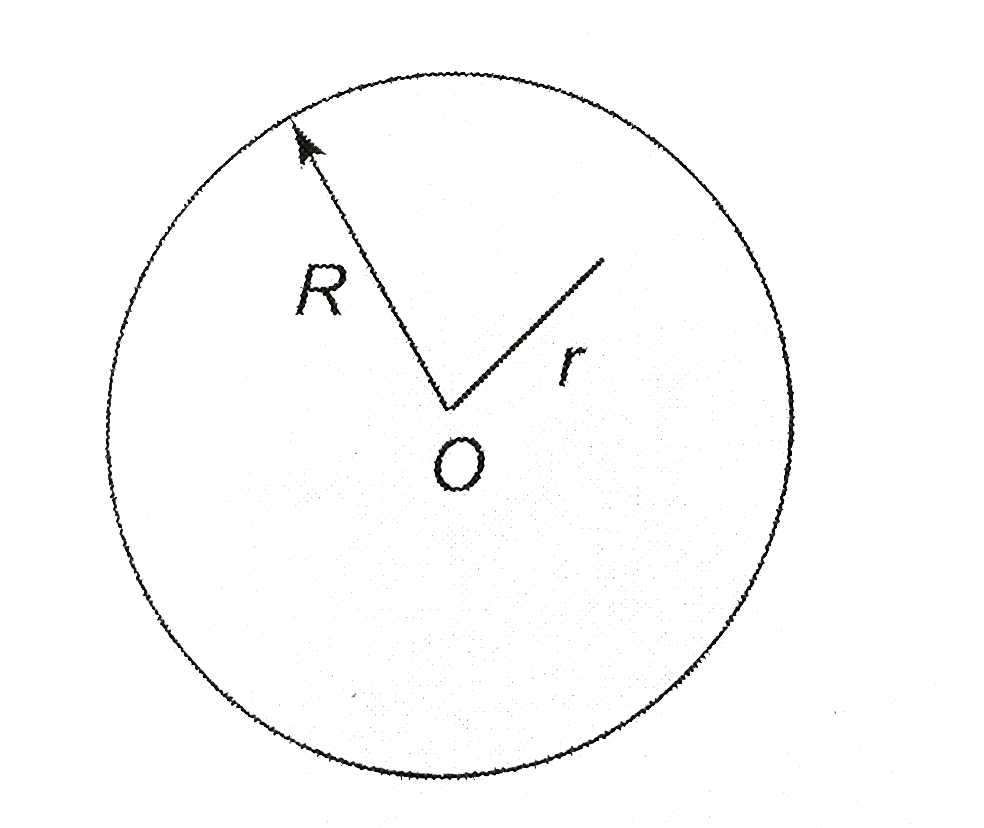A cyclist rides along the circular path of a circular horizontal plane of radius R, the firctional coefficient being dependent only on distance r from the centre O of the plane as μ=μ0(1−rR), where μ0 is a constant.
What is the cyclist's maximum velocity ?
√μRg
2√μ0Rg
12√μ0Rg
√2μ0Rg
The correct Answer is:C
Step by step video, text & image solution for A cyclist rides along the circular path of a circular horizontal plane of radius R, the firctional coefficient being dependent only on distance r from the centre O of the plane as mu = mu_(0) (1 - (r )/(R )), where mu_(0) is a constant. What is the cyclist's maximum velocity ? by Physics experts to help you in doubts & scoring excellent marks in Class 12 exams.
Topper's Solved these Questions
- BOOK - BANSALCHAPTER - TEST PAPERSEXERCISE - PHYSICS PART B3videos
TEST PAPERS
- BOOK - BANSALCHAPTER - TEST PAPERSEXERCISE - PHYSICA PART A12videos
TEST PAPERS
- BOOK - BANSALCHAPTER - TEST PAPERSEXERCISE - PHYSICS PART (C )15videos
TEST PAPERS
- BOOK - BANSALCHAPTER - SEMICONDUCTORSEXERCISE - CBSE Question32videos
SEMICONDUCTORS
Similar Questions
A cyclist rides along a circular path in a horizontal plane where the coefficient of friction varies with distance from the centre O of the circular path as μ=μ0(1−rR) where R is the maximum distance up to which the road is rough
Find the radius of the circular path along which the cyclist can ride with maximum velocity. What is this maximum velocity ?View SolutionA cyclist rides along the circumference of a circular horizontal plane of radius R, with the friction coefficient μ=μ0(1−rR), where μ0 is constant and r is distance from centre of plane O. Find the radius of the circle along which the cyclist can ride with the maximum velocity, what is this valocity?
 View Solution
View Solution
Knowledge Check
- Question 1 - Select One
A cyclist rides along the circular path of a circular horizontal plane of radius R, the firctional coefficient being dependent only on distance r from the centre O of the plane as μ=μ0(1−rR), where μ0 is a constant.
Find the radius of the circle such that the cyclist can ride with the maximum velocity.ARBR2CR3DR4 - Question 2 - Select One
A sphere of charges of radius R carries a positive charge whose volume chasrge density depends only on the distance r from the ball's centre as ρ=ρ0(1−rR), where ρ0 is constant. Assume epsilon as theh permittivity of space.
the maximum electric field intensity isAEm=ρ0R9εBEm=ρ0ε9RCE_m=(rhoR)/(3epsilon)DEm=ρ0R6ε - Question 3 - Select One
The maximum speed of a car on a curved path of radius 'r' and the coefficient of friction μk is
Av=√μkgrBv=√μkgrCv=√grμkDv=√1μkgr
A small block starts sliding down an inclined plane subtending an angle θ with the horizontal . The coefficient of friction between the block and plane depends on the distance covered from rest along the plane as μ=μ0x where μ0 is a constant . Find (a) the distance covered by the block down the plane till it stops sliding and (b) its maximum velocity during this journey .
View SolutionA car is taking turn on a circular path of radius R. If the coefficient of friction between the tyres and road is μ, the maximum velocity for no slipping is
View SolutionDue to the flow of current in a circular loop of radius R, the magnetic induction produced at the centre of the loop is B. The magnetic moment of the loop is (μ0=permeability constant)
View SolutionThe maximum speed of a car on a curved path of radius 'r' and the coefficient of friction μk is .
View SolutionA car moves along a horizontal circular road of radius r with constant speed v. The coefficient of friction between the wheels and the road is μ. Which of the following statement is not true ?
View Solution
